-
 Bitcoin
Bitcoin $76,444.7530
-3.77% -
 Ethereum
Ethereum $1,473.8355
-5.46% -
 Tether USDt
Tether USDt $0.9991
-0.08% -
 XRP
XRP $1.7965
-5.51% -
 BNB
BNB $553.4919
-0.36% -
 USDC
USDC $0.9999
-0.02% -
 Solana
Solana $105.2981
-1.74% -
 TRON
TRON $0.2303
0.81% -
 Dogecoin
Dogecoin $0.1422
-4.62% -
 Cardano
Cardano $0.5587
-4.41% -
 UNUS SED LEO
UNUS SED LEO $8.9866
1.01% -
 Toncoin
Toncoin $2.9933
-4.74% -
 Chainlink
Chainlink $10.9113
-4.81% -
 Stellar
Stellar $0.2215
-4.76% -
 Avalanche
Avalanche $16.1163
-3.29% -
 Sui
Sui $1.9371
-3.89% -
 Shiba Inu
Shiba Inu $0.0...01065
-6.69% -
 Hedera
Hedera $0.1469
-3.29% -
 MANTRA
MANTRA $6.2058
-1.53% -
 Dai
Dai $1.0000
0.01% -
 Bitcoin Cash
Bitcoin Cash $269.3457
-2.08% -
 Polkadot
Polkadot $3.3773
-5.87% -
 Litecoin
Litecoin $69.2204
-2.50% -
 Ethena USDe
Ethena USDe $0.9986
-0.01% -
 Bitget Token
Bitget Token $4.0180
-3.25% -
 Pi
Pi $0.5649
-4.50% -
 Hyperliquid
Hyperliquid $11.1928
-2.80% -
 Monero
Monero $195.3885
-4.41% -
 OKB
OKB $50.9235
-0.59% -
 Uniswap
Uniswap $4.7688
-6.95%
How does NFT User Experience simplify the use process of NFTs?
Improved NFT UX simplifies the process through intuitive interfaces, streamlined workflows, and educational resources, addressing challenges like complex wallet management and blockchain interactions.
Mar 02, 2025 at 10:18 pm
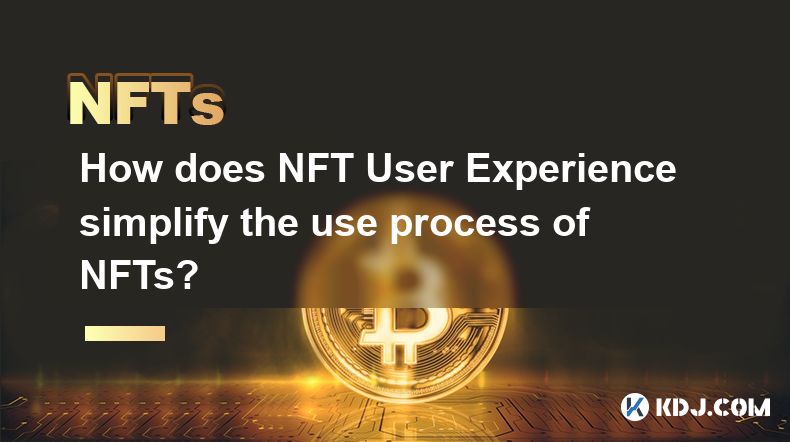
Key Points:
- NFT user experience (UX) aims to simplify the often complex process of interacting with NFTs.
- This simplification is achieved through intuitive interfaces, streamlined workflows, and educational resources.
- Several platforms and tools are actively improving NFT UX, focusing on accessibility and ease of use.
- Challenges remain, particularly concerning scalability, security, and the integration of diverse blockchain networks.
How Does NFT User Experience Simplify the Use Process of NFTs?
The world of Non-Fungible Tokens (NFTs) can be intimidating for newcomers. Navigating blockchain technology, understanding gas fees, and managing digital wallets requires a level of technical expertise that many lack. Improving the NFT user experience (UX) is crucial for wider adoption. This involves making the entire process – from acquiring and managing to trading and displaying NFTs – significantly easier and more intuitive.
One major aspect of improved UX is the simplification of wallet management. Many early NFT platforms required users to interact directly with complex blockchain interfaces. Modern platforms offer simpler wallet integrations, often abstracting away the technical details. This allows users to manage their NFTs without needing deep technical knowledge. They can seamlessly buy, sell, and transfer assets with minimal hassle.
Another key element is the design of user interfaces (UIs). Early NFT marketplaces were often cluttered and difficult to navigate. Now, many platforms feature cleaner, more intuitive designs that prioritize ease of use. Features like improved search functionality, clear asset displays, and straightforward transaction processes contribute to a better overall experience.
Education plays a crucial role in simplifying NFT usage. Many platforms now include comprehensive educational resources to help users understand the basics of NFTs, blockchain technology, and the associated risks. These resources can range from interactive tutorials to detailed FAQs and support documentation, empowering users to make informed decisions.
The development of user-friendly tools further streamlines the process. Tools for managing NFT collections, tracking market trends, and even creating NFTs have become more accessible. These tools often feature drag-and-drop interfaces and simplified workflows, eliminating the need for advanced technical skills.
Many platforms are exploring innovative approaches to improve UX. This includes integrating NFTs directly into existing platforms and applications users already utilize, such as social media or gaming platforms. This removes the need for users to navigate separate marketplaces or wallets, creating a more seamless experience.
The integration of different blockchain networks is another area of focus. The ability to seamlessly interact with NFTs across various chains, without needing to switch between platforms or wallets, is a significant improvement. This enhances accessibility and allows for greater flexibility in managing and utilizing NFT assets.
However, challenges remain. Scalability continues to be a significant issue, especially with high transaction volumes. Gas fees, which can be substantial, remain a barrier to entry for many users. Security is another critical concern; platforms need to implement robust measures to protect user assets from theft or fraud.
Furthermore, the diversity of NFT types and their associated functionalities can lead to a fragmented user experience. Standardization and interoperability across different NFT platforms and protocols are necessary for a truly unified and streamlined experience. The development of universal standards and protocols is essential to overcome this fragmentation.
The ongoing development of NFT standards aims to improve interoperability between different NFT platforms. This would allow users to seamlessly transfer and manage NFTs across various ecosystems without encountering compatibility issues. The evolution of these standards is crucial for a more streamlined user experience.
Common Questions:
Q: What are the biggest challenges in improving NFT UX?
A: The biggest challenges include scalability (handling large transaction volumes efficiently), high gas fees (making transactions expensive), security (protecting user assets from theft), and the integration of diverse blockchain networks (allowing seamless interaction across different platforms).
Q: How do NFT marketplaces improve the user experience?
A: NFT marketplaces improve UX through intuitive interfaces, streamlined workflows, integrated wallet management, educational resources, and tools for managing NFT collections.
Q: Are there any tools available to simplify NFT management?
A: Yes, many tools are emerging to simplify NFT management. These include portfolio trackers, aggregators showing NFTs across different marketplaces, and tools for batch transfers and managing multiple wallets.
Q: What role does education play in simplifying NFT usage?
A: Education is crucial. Platforms offering clear explanations of NFTs, blockchain technology, and associated risks empower users to make informed decisions and avoid scams.
Q: How can I learn more about improving my NFT experience?
A: Explore various NFT marketplaces, read articles and tutorials on NFT technology, and engage with online communities dedicated to NFTs and blockchain technology. Pay attention to platform reviews and user feedback to identify user-friendly platforms.
Q: What are the future trends in NFT UX?
A: Future trends include increased focus on seamless cross-chain interoperability, more sophisticated wallet management tools, and greater integration of NFTs into existing applications and platforms users already utilize. A move towards greater standardization of NFT protocols is also anticipated.
Disclaimer:info@kdj.com
The information provided is not trading advice. kdj.com does not assume any responsibility for any investments made based on the information provided in this article. Cryptocurrencies are highly volatile and it is highly recommended that you invest with caution after thorough research!
If you believe that the content used on this website infringes your copyright, please contact us immediately (info@kdj.com) and we will delete it promptly.
- "Cardano (ADA) Price Could Dip Below $0.60, Following Previous Market Cycle"
- 2025-04-09 05:10:12
- BONK, the well-known meme coin, has risen over 35% in the last week, attracting meme coin investors in the market. So, what caused this rally?
- 2025-04-09 05:10:12
- Bitcoin (BTC) Investors May Not Exactly Feel It, but BTC Has Been a Relatively Good Bet
- 2025-04-09 05:05:12
- Donald's Bitcoin (DONBTC) Could Turn Early Investors into Multi-Millionaires, Like Shiba Inu (SHIB) and Dogecoin (DOGE) Did
- 2025-04-09 05:05:12
- 6 Upcoming Kraken Listings That Could Be the Next Big Thing in Crypto
- 2025-04-09 05:00:13
- COTI Unveils New Privacy-Focused Blockchain to Reshape Web3 Transactions
- 2025-04-09 05:00:13
Related knowledge
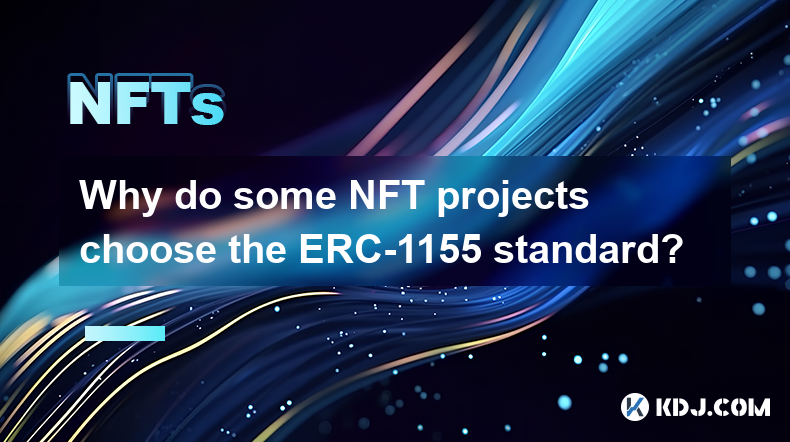
Why do some NFT projects choose the ERC-1155 standard?
Apr 08,2025 at 11:49am
The world of Non-Fungible Tokens (NFTs) has seen a significant rise in popularity and innovation, leading to the development of various token standards. Among these, the ERC-1155 standard has emerged as a versatile and efficient choice for many NFT projects. This article delves into the reasons why some NFT projects opt for the ERC-1155 standard, explor...
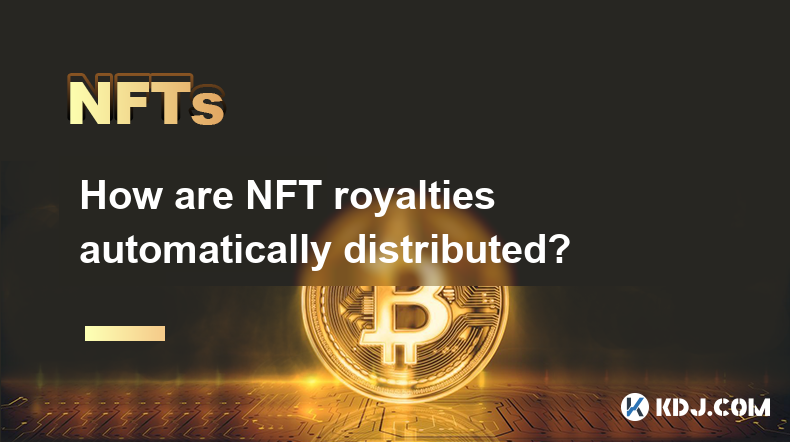
How are NFT royalties automatically distributed?
Apr 08,2025 at 08:14pm
NFTs, or Non-Fungible Tokens, have revolutionized the digital art and collectibles market by providing a way to prove ownership and authenticity of digital assets. One of the most intriguing features of NFTs is the ability to automatically distribute royalties to creators whenever their work is resold. This article will delve into the mechanisms behind ...
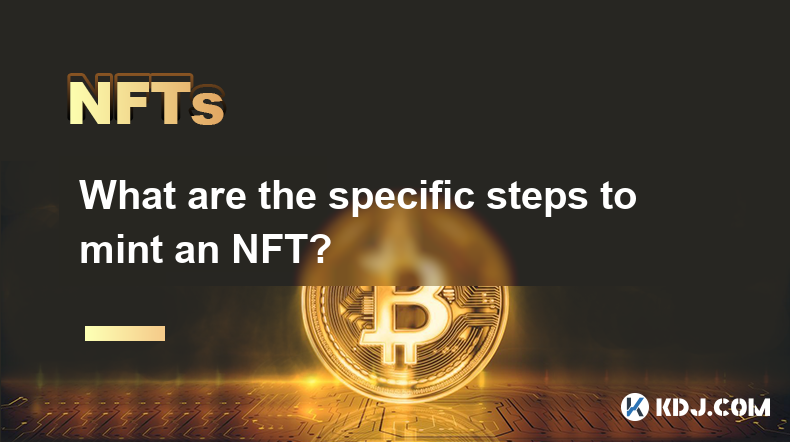
What are the specific steps to mint an NFT?
Apr 08,2025 at 05:22pm
Introduction to NFT MintingMinting an NFT, or Non-Fungible Token, involves creating a unique digital asset on a blockchain. This process allows artists, creators, and collectors to tokenize their work, ensuring its authenticity and ownership. Understanding the steps to mint an NFT is crucial for anyone looking to enter the world of digital collectibles....
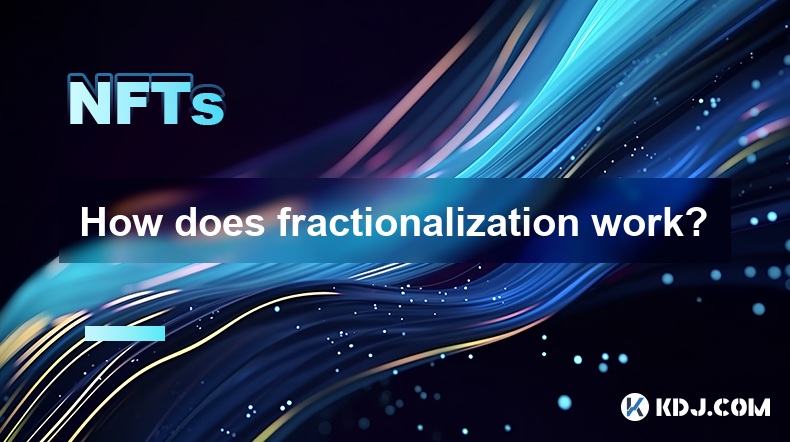
How does fractionalization work?
Apr 08,2025 at 07:42pm
How does fractionalization work? Fractionalization in the context of cryptocurrencies and blockchain technology refers to the process of dividing a single asset into smaller, more manageable pieces. This concept has revolutionized the way investors and users interact with high-value assets, making them more accessible and liquid. In this article, we wil...
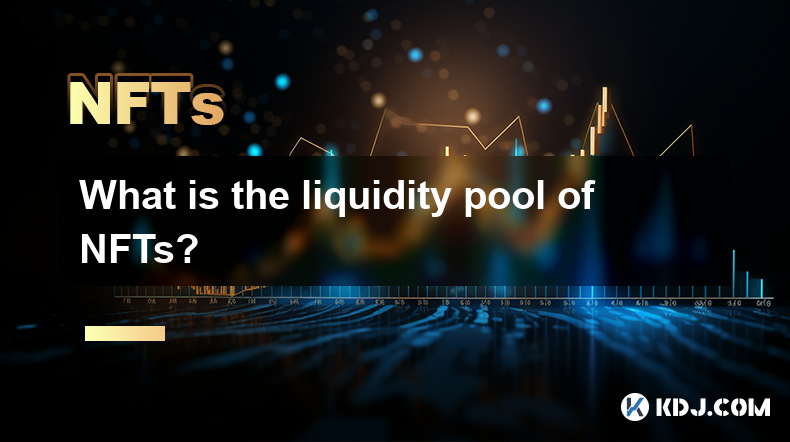
What is the liquidity pool of NFTs?
Apr 08,2025 at 05:35pm
The concept of liquidity pools has become increasingly popular within the cryptocurrency and decentralized finance (DeFi) ecosystems. While traditionally associated with token swaps, the idea has extended to the realm of Non-Fungible Tokens (NFTs). Liquidity pools for NFTs are mechanisms that facilitate the trading and exchange of these unique digital a...

What are the common ways to participate in the NFT whitelist?
Apr 08,2025 at 08:28pm
Participating in an NFT whitelist can be an exciting opportunity for enthusiasts and investors looking to secure their spot in upcoming NFT drops. The whitelist often grants early access or special privileges, such as lower minting fees or guaranteed allocations. Here, we will explore the common ways to participate in an NFT whitelist, detailing each me...

Why do some NFT projects choose the ERC-1155 standard?
Apr 08,2025 at 11:49am
The world of Non-Fungible Tokens (NFTs) has seen a significant rise in popularity and innovation, leading to the development of various token standards. Among these, the ERC-1155 standard has emerged as a versatile and efficient choice for many NFT projects. This article delves into the reasons why some NFT projects opt for the ERC-1155 standard, explor...

How are NFT royalties automatically distributed?
Apr 08,2025 at 08:14pm
NFTs, or Non-Fungible Tokens, have revolutionized the digital art and collectibles market by providing a way to prove ownership and authenticity of digital assets. One of the most intriguing features of NFTs is the ability to automatically distribute royalties to creators whenever their work is resold. This article will delve into the mechanisms behind ...

What are the specific steps to mint an NFT?
Apr 08,2025 at 05:22pm
Introduction to NFT MintingMinting an NFT, or Non-Fungible Token, involves creating a unique digital asset on a blockchain. This process allows artists, creators, and collectors to tokenize their work, ensuring its authenticity and ownership. Understanding the steps to mint an NFT is crucial for anyone looking to enter the world of digital collectibles....

How does fractionalization work?
Apr 08,2025 at 07:42pm
How does fractionalization work? Fractionalization in the context of cryptocurrencies and blockchain technology refers to the process of dividing a single asset into smaller, more manageable pieces. This concept has revolutionized the way investors and users interact with high-value assets, making them more accessible and liquid. In this article, we wil...

What is the liquidity pool of NFTs?
Apr 08,2025 at 05:35pm
The concept of liquidity pools has become increasingly popular within the cryptocurrency and decentralized finance (DeFi) ecosystems. While traditionally associated with token swaps, the idea has extended to the realm of Non-Fungible Tokens (NFTs). Liquidity pools for NFTs are mechanisms that facilitate the trading and exchange of these unique digital a...

What are the common ways to participate in the NFT whitelist?
Apr 08,2025 at 08:28pm
Participating in an NFT whitelist can be an exciting opportunity for enthusiasts and investors looking to secure their spot in upcoming NFT drops. The whitelist often grants early access or special privileges, such as lower minting fees or guaranteed allocations. Here, we will explore the common ways to participate in an NFT whitelist, detailing each me...
See all articles






















































































